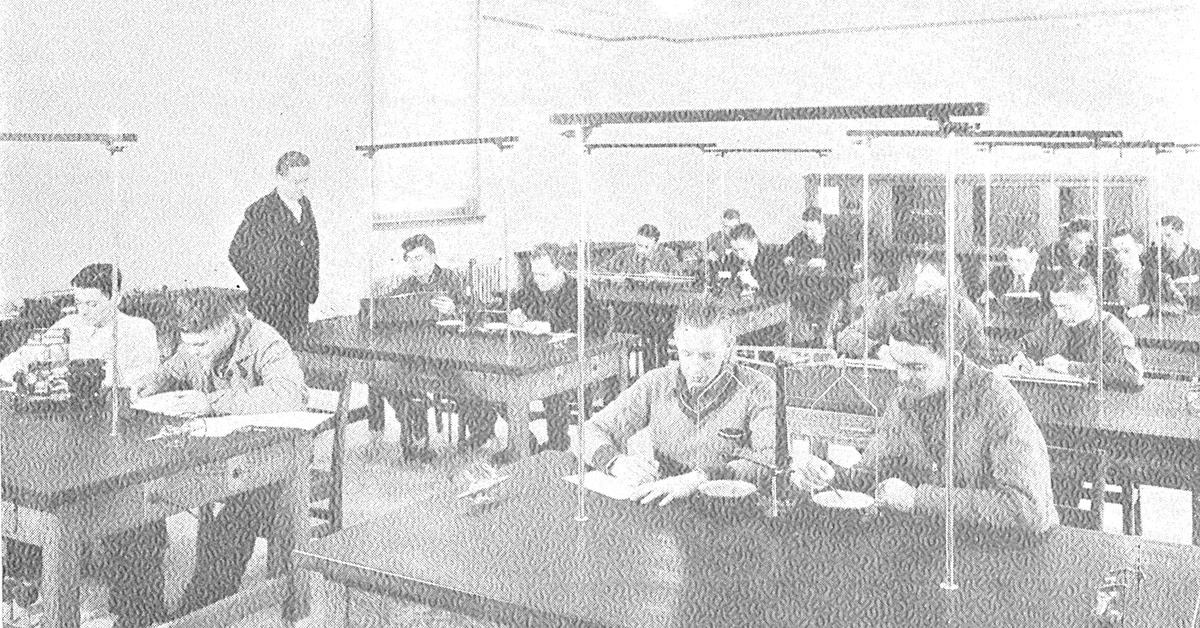R.E. Lee Wilson Hall: A Retrospective on 84 Years at A-State
JONESBORO – R.E. Lee Wilson Hall might never have existed had a fire not destroyed State A & M College's classroom and administrative building on a cold January night in 1931.
Diligent firefighters streamed extra water on the building's main floor vault to preserve most of the student and institutional records, but all else was lost. As noted in "Voices from State: An Oral History of Arkansas State University," written by professors Larry Ball and William M. Clements, "The fire demonstrated conclusively the institution's ability to survive and bounce back."
The first bounce was not so smooth. Insurance proceeds on the burned building were inadequate for replacement; the state legislature authorized a bond issue that would have financed the difference, but the bonds did not sell in the Depression-era economy. Members of the college Board of Trustees arranged a commercial loan to finish the work.
Wilson Hall was built and equipped in 1931-32 for a cost of $350,000, according to "The ASU Story: A History of Arkansas State University, 1909-1967," written by history professor Lee A. Dew.
Because Wilson Hall was sited a few yards west of the building it replaced and contractors built over the original foundation instead of removing it first, the ceiling of the east portion of Wilson's bottom floor is lower than the rest. Dew's book says the contractor used 16 teams of mules to dig the footings along with a "McCormick-Deering tractor and rotary shovel," a mechanical marvel for the time.
The Art Deco style and buff-colored brick established an architectural style for campus construction that has continued into the 21st century.
The building opened for classes on Nov. 28, 1932, following a Thanksgiving holiday during which students and faculty had something new for which to be extra grateful. From the morning after the fire, classes had been held in every conceivable place across campus including the dairy barn and old armory.
Originally, Wilson Hall housed almost every aspect of what was then A & M College, from science labs, home economics classes, library and post office to the president's office and a 960-seat auditorium where students sat for concerts, stage productions, chapel and commencement.
Food and drink were available in the Wigwam, named in tribute to the institution's Indian mascot of the time.
In an article published in "Celebrating Our First Century: Embrace the Past: 1909 – 2009, Arkansas State University," alumnus Charlie Crow, a 1962 graduate, called the Wigwam the "de facto focal point of the campus," where the students would eat, play cards, study, read the newspaper and attempt to talk " . . . above the turned-up volume of the well-stocked Rock-Ola juke box that blared the Big Bopper's 'Chantilly Lace' from the corner."
The Wigwam's central location made it a logical stopping point on the way to and from classes, and It was "the only authorized place on campus to grab a casual snack – a hamburger deluxe or a grilled cheese sandwich – which were mercifully edible and cheap."
Because of the large number of commuter students, he said the Wigwam was the commuters' only lounge and central meeting spot. The campus residents who did not have cars "quickly learned to come to the Wigwam to hitch a ride home."
The building originally had open-air courtyards, accessible from the hallways. "It was in the courtyards where we had our teas and recitals," recalled Orieda Horn Anderson, a 1942 graduate, in "Embrace the Past." She wrote, "Mrs. Mary Rogers Brown's classes were responsible for the teas so that we could learn proper serving. We prepared the punch and cookies and served those."
The communication programs had their beginnings in Wilson Hall. KASU-FM radio began broadcast operations on May 17, 1957, from a small studio.
Journalism classes wrote and edited articles for The State College Herald. A copy of the May 8, 1953, edition, sealed into a wall space years ago, was found by workers during renovation last fall. Among the students on the newspaper staff or mentioned in news columns were at least three who years later were honored as A-State Distinguished Alumni: Gene Foreman, Wayne Hartsfield and Charles Rasberry, all members of the 1956 class.
ASU Museum traces its origin to exhibits in Wilson Hall the year it opened, as noted in the museum's entry in the Encyclopedia of Arkansas.
The institution attained four-year degree status and was officially renamed Arkansas State College just months after Wilson Hall opened on Nov. 28, 1932.
Before the building was transformed over the past 10 months for a new site of New York Institute of Technology's College of Osteopathic Medicine, every generation of A-State student since 1932 had at least a portion of their college experience in Wilson Hall.
With renovation complete, R.E. Lee Wilson Hall at Arkansas State University will be rededicated Thursday, June 2. A ribbon-cutting ceremony is scheduled for 1 p.m. at the front entrance, followed by self-guided tours of the building. The public is invited. Wilson Hall has been remodeled for use as the new second instructional site of the New York Institute of Technology's College of Osteopathic Medicine (NYITCOM).
Learn more >>
